As the IPCC issues ‘final warning’ youth raise their voice in push for stronger climate action
Story by The Canadian Press • Saturday
The Intergovernmental Panel on Climate Change gave a ‘final warning’ earlier this week when it published its Synthesis Report of the sixth cycle, the most in-depth report on the status of climate change since the signing of the Paris Climate Agreement in 2015.
The exhaustive data, pulled together by hundreds of scientists working collaboratively around the world, confirms what experts have been cautioning for decades: the window for extreme action to combat the climate crisis is closing quickly.
The effects of climate change have been accelerating across the globe, and the consequences are becoming more and more visible. From June to October of last year, heavier monsoon rains and melting glaciers following a dramatic heat wave—the direct result of a warming climate—decimated Pakistan, killing over 1,700 people and causing unprecedented financial losses. Six months after floods ravaged the nation, over 10 million people living in affected areas were still deprived of safe drinking water. It was estimated that 20.6 million people, including 9.6 million children, were in need of humanitarian assistance.
In September, a cataclysmic hurricane tore through Cuba and the southeast United States. Hurricane Ian was the deadliest to strike Florida since 1935, killing 149 people in the state, six across other southern states and five in Cuba. Approximately 50,000 people there were evacuated from their homes and in Florida over 35,000 residences were damaged or destroyed in just a single county. Damage was estimated at $113.1 billion, the costliest disaster in the state’s history and the third costliest disaster globally on record.
According to the World Economic Forum, there were 10 disasters globally in 2022 that cost over $3 billion in damages, compared to seven in 2021. The total sum of damages from these 10 disasters was well over $150 billion.
“Human-caused climate change is already affecting many weather and climate extremes in every region across the globe,” the IPCC report states. “Evidence of observed changes in extremes such as heatwaves, heavy precipitation, droughts, and tropical cyclones, and, in particular, their attribution to human influence, has strengthened since AR5.” (AR5 was the IPCC’s fifth assessment cycle of climate change impacts originally published in 2014).
According to the IPCC, global surface temperature has warmed faster since 1970 than during any other 50-year period in the last 2,000 years. Between 2010 and 2019, average annual emissions were the highest ever recorded. The report offers some hope; while emissions are at an all time high, the rate of increase is lower than it was in the previous decade.
By signing the Paris Climate Agreement, countries committed to policies that would limit warming to an average of 1.5 degrees globally, compared to pre-industrial levels. Since what was heralded as a groundbreaking international call to action, it has become devastatingly clear that governments, including Canada’s, had little will to oppose corporations across almost every sector that continue to profit from emitting carbon. With the 1.5 degree threshold ignored, and the Paris Agreement representing little more than lip service, scientists began modelling scenarios for two, three and even four degrees of warming.
This week’s report shows that Nationally Determined Contributions (NDCs) announced prior to COP 26 (in Glasgow in 2021), mean it is “likely” that warming will exceed 1.5 degrees and, if no additional commitments are made, it will be difficult to limit warming to two degrees. Average global temperature is likely to reach 1.5°C between now and 2040 even under the very low GHG emissions scenarios.
Without strengthening policies, the IPCC estimates we are looking at 2.2 to 3.5 degrees of warming by 2100.
This will radically alter human life on Earth.
“The cumulative scientific evidence is unequivocal: climate change is a threat to human wellbeing and planetary health,” the report states. “There is a rapidly closing window of opportunity to secure a liveable and sustainable future for all.”
“What is missing on the messaging is that that is the window that we have. But we can also choose to change the outcome of this window of opportunity,” Stefania Maggi, a professor in the department of psychology at Carleton University who specializes in psychological barriers to climate action and youth activism, said.
The report highlights that the impacts of climate change are not felt equally, as those whose lifestyles cause the most damage are often protected from the consequences, while others around the world whose carbon footprints are much, much smaller suffer the most.
Often, those who face the harshest consequences of climate change are not making governing decisions. Commonly, people in positions of power are motivated to protect the status quo, which has given them the lifestyles they are accustomed to.
“Drawing on diverse knowledge and partnerships, including with women, youth, Indigenous Peoples, local communities, and ethnic minorities can facilitate climate resilient development and has allowed locally appropriate and socially acceptable solutions,” the IPCC report states.
Wildfires and localized flooding have made the headlines, but Canada has not seen a disaster on the same scale as Pakistan or Florida.
Youth, increasingly, are confronting leadership that has proven to be ineffective. Historically, politicians have prioritized the concerns of older voters elected officials relate to and who turn out to election polls at a high rate.
Youth who have grown up over the past two decades, cannot escape the threat of climate change. From extreme weather events to changing air quality, the bleaching of our oceans and the disappearance of entire lakes, the scenes that have unfolded around them, including in the constant portrayals of dystopian life in popular culture, are unlike what their parents and grandparents experienced. Few elected officials who grew up with the advent of hyper-consumerism and the calming of the Cold War, can relate to the sense of climate anxiety more and more young people are living through—it’s only their air, water and planet that’s at stake.
“For young people who are thinking about their future, for example, knowing that there is an expiration date to their ability to realize their life goals, is very daunting,” Maggi said. Older generations, she adds, might share some of the fear, but even that is often a sense of concern for their children and grandchildren, who will actually have to live with the consequences.
“It becomes a matter of existentialism. How can I even plan for the future? So the choices I make today, do they even matter? Is there even a place for me to give meaning to the things that I do?”
“Adults might like warmer winters, but we see them as terrifying,” said Ottavia Paluch, a youth activist with Future Majority, a nonpartisan, nonprofit organization working to make politics more accessible and sustainable for young people.
This difference in experiences has led to the spread of youth activism across the country, challenging climate change legislation at all levels of government. Just within the past year, youth groups have taken both the provincial and federal governments to court, demanding more responsibility and stronger action for climate mitigation.
In September, seven youth from across Ontario came together to take the provincial government to court for the weakening of emissions reductions targets. Former Ontario premier Kathleen Wynne helped pass legislation in 2016 which committed to reducing greenhouse gas emissions by 15 percent below 1990 levels by 2020, 37 percent by 2030 and 80 percent by 2050. In 2018, Premier Doug Ford replaced the Act with the Cap and Trade Cancellation Act. While the new Act still focuses on a reduction of emissions, the targets are not nearly as aggressive and do not meet standards set by most jurisdictions around the world committed to global reduction goals.
Under the Cap and Trade Cancellation Act emissions are compared to 2005 levels which in Ontario were already 13 percent higher than in 1990. The PCs set the target of 30 percent reductions from 2005 levels by 2030, a far lower goal than the original one set by the Liberals.
The youth challenged the legislation under Section 7 and 15 of the Charter of Rights and Freedoms which guarantees life, liberty and security for all Canadians and ensures every Canadian, regardless of race, religion, national or ethnic origin, colour, sex, age or physical or mental disability, is to be treated with dignity and respect. The plaintiffs argued that climate change disproportionately affects young people.
The Mader case, as the provincial case is known, is not the only example of youth mobilizing in the legal system to fight for stronger climate policies. Fifteen young people from across Canada initially took the federal government to court in 2020 for allegedly violating their rights under Section 7 and Section 15 of the Charter. The case was dismissed by the federal courts on two key grounds: Justiciability, referring to whether the matter at hand falls within the jurisdiction of the courts; and the overly broad nature of the complaint.
Related video: Scientists Release Urgent 'Final Warning' On Climate Crisis
More video
s
DailymotionUN Reports Climate Time Bomb Ticking But World Can Still Avert Worst Calamities
0:39

France 24IPCC report calls for urgent climate action, but will governments listen?
5:04

WIONNew IPCC report on climate change
8:15
The youth returned with their litigation team in February, this time at the federal court of appeal, arguing for their chance to be heard in court. Both cases are currently awaiting a decision.
On Wednesday, another example of youth frustration with apathetic leadership was witnessed when the Council chamber inside City Hall was filled with volunteers from Future Majority’s Mississauga chapter. The group delegated before Council about a renewed and strengthened commitment to climate action with particular attention to the implementation of Green Development Standards (GDS). The four youth who took to the podium, and the dozens more in the audience want their municipal leaders, elected by the citizens, to do their job.
“We've tried to take shorter showers and reduce our carbon footprint, yet the steps we take never quite seem like enough,” Poluch said in the delegation. “When something happens over and over, you feel as though you can’t control it and let it take over. And that's why so many resign themselves in the context of climate.”
Many of the youth delegates attend school but took time off to address council members in the seat of local government.
“But climate change isn't just an interruption to our schedules. It's also an opportunity for an overlooked demographic to help fix an overlooked policy,” Amanda Snel, one of the delegates, told elected officials.
“If you're going to be listening to developers, as official stakeholders, you should hear from future renters and homeowners as well,” Kaneera Uthayakumaran added.
GDS are measures created by municipalities that encourage environmentally, socially and economically sustainable design of buildings and associated infrastructure. In Mississauga, buildings make up the largest source of emissions; across the province they are the second worst cause of pollution, after transportation. Mississauga’s Green Development Standards were implemented in 2012 and have not been updated in more than a decade, despite dramatic, climate-related changes impacting municipal planning.
The delegates encouraged council members to look at Whitby, Ajax, Pickering and Toronto, communities which all have stronger environmental policies to govern future development.
“They all have mandatory energy tier approaches, which also require an energy modeling report, and they all use energy metrics to run a design. We are the second largest economy and third largest city in Ontario, so why [can’t] we do the same?” Uthayakumaran asked.
Council members thanked the youth for their delegation, recognizing the importance of the issues raised. Councillor Martin Reid said they should be at the table during the development process.
“It's one thing to tick a box and say, ‘Yes, we're going to address climate change’. It's another thing to see your faces there,” he said.
Other members were quick to give themselves a pat on the back for the action they have taken.
“We all agree that this is one of the most critical issues of our generation that we have to come and face. And we were one of the first councils to pass an emergency plan and passed our climate change action plan up into June of 2019,” Mayor Bonnie Crombie said.
“You're preaching to the converted here, we're all working as hard as we can,” Councillor Carolyn Parrish said.
While Mississauga has done far more than its neighbour, Brampton, on climate action — Mississauga is further ahead in greening its transit fleet and dedicated more than 40 percent of its 2023 capital budget to climate related initiatives — the only concrete climate action that anyone on council could point to was the declaration of a climate emergency last term, which was not an actual action, but simply a pledge to do more.
Council members told the youth they would be better off visiting Queen’s Park to take on the increasingly environmentally destructive policies of the Ontario PC government. Andrew Whittemore, commissioner of planning and building at the City of Mississauga, pointed to the limitations of the Planning Act and the provincial Building Code.
“In fact, you guys will all recall Bill 23, which was ushered in, that Bill actually contemplated eliminating all green development standards period. That was walked back. And then some new green standards were brought forward that we were allowed to regulate mainly around green roofs and environmental landscaping, that sort of thing,” he said.
In November, when Bill 23 was still going through the legislative process, Future Majority delegated to the provincial government in opposition to removing GDS from the Building Code.
“The reason why we're here this morning is because we were there advocating for municipalities to have the ability to enforce these standards. So today's on the local level. And we want to see all representatives supporting strong climate action in this position,” Paluch said. “We want to see all levels of government prioritizing climate, but I would like to see them take a little bit more responsibility. I think having it start from the ground up is so vital.”
When the delegates and council members addressed the topic of Bill 23, the age of the youths was mistaken for inexperience and a lack of understanding of the topic.
“We talk about Bill 23 as we're all familiar with it. You guys haven't a clue what we're talking about half the time, I'm sure. It is provincial, and you've got to go to the Province,” Parrish said.
A few months ago, Future Majority delegated to Brampton council about the same issue. The youth admitted they were unprepared and did not have comprehensive responses to the comments and concerns of councillors there. It encouraged them to better prepare for their visit to Mississauga City Hall.
“We have done our homework with the Ontario Building Act. And we did go speak about Bill 23 in November. So we did want to show the local government as well, that other municipalities are doing what we're asking them,” Uthayakumaran said. “We only see it as a testament to how much work we can do. And what they don't know that we're capable of.”
In the end, council members did pass a motion in favour of the delegation committing the City to revisit its Climate Change Action Plan and GDS policies and make suitable adjustments in the wake of the IPCC report, and that a new pathway report to meet these standards would be developed in consultation with the Environmental Action Committee as well as youth and Indigenous peoples.
“Advocacy really does matter. This is how you get things done. This is the first step. There's a lot of work to get done after this. But you've taken the steps to be a constructive partner in this process. And this is your future as well,” Councillor Alvin Tedjo said.
Maggi stressed the importance of other forms of activism at other levels.
“If you are not the kind of person who is politically involved, who likes to go and do collective gatherings and fight climate change at that level, then you tend to feel that there's no space for you to make a contribution towards climate action.”
As we move closer to human-caused climate danger she stresses the importance of localized and individualized projects that can still spark positive action.
“So the division between us and them, or the messaging that nothing is happening, or nothing is working, which is also not true; there's things that are happening, but we need to do more,” she said.
This week’s exhaustive IPCC report, based on hard data from around the world, is overwhelming to many.
Some of the most bleak consequences of climate change, many of which are now irreversible, highlighted in the report include:
The soul-wrenching list is all too familiar to many young people who have grown up surrounded by this ominous reality.
“I don't think, genuinely, anyone is actually prepared for something like this; psychologically, socially, I don't think we are,” Maggi says. “But that doesn't mean that we cannot do it.”


















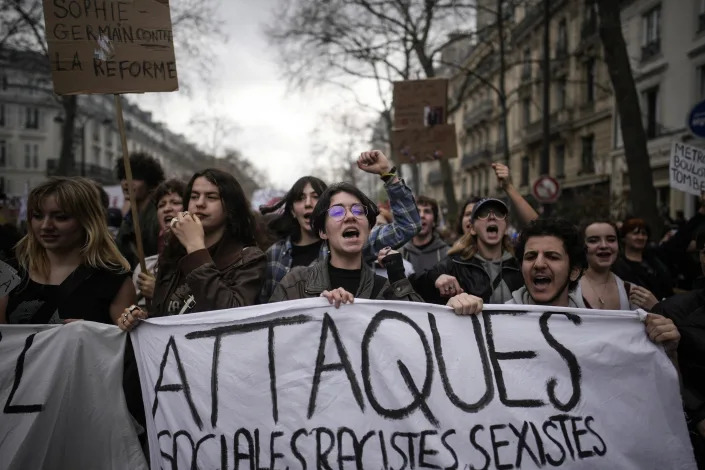
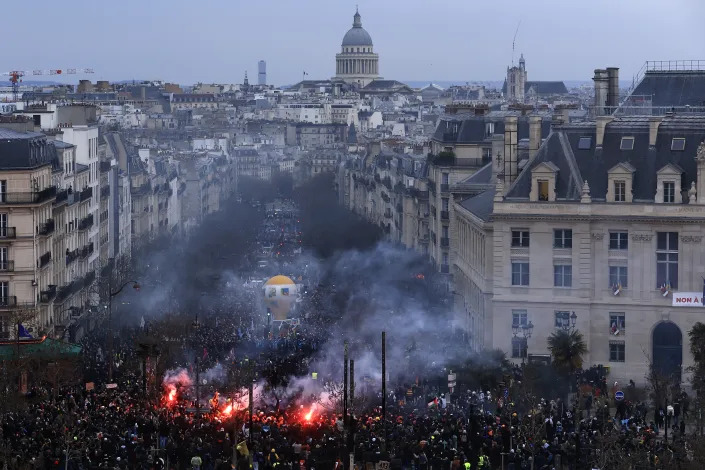
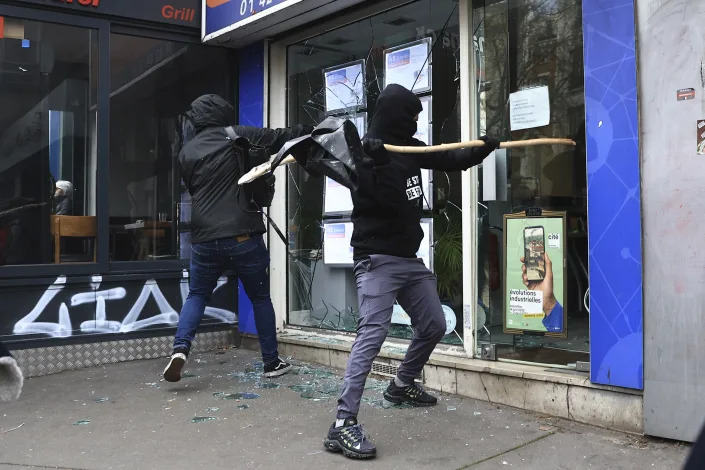
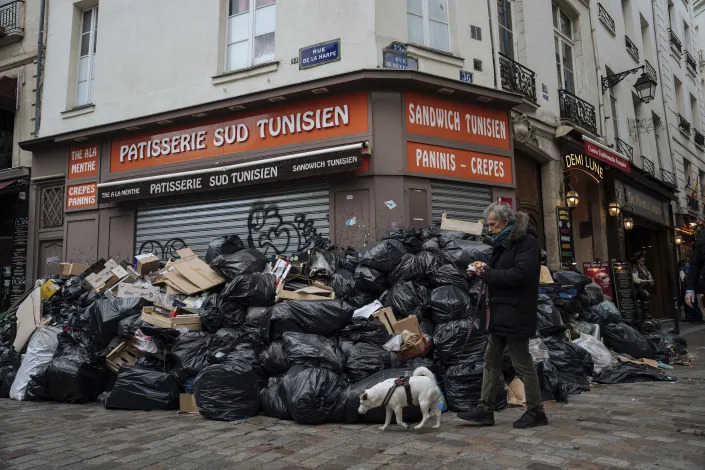
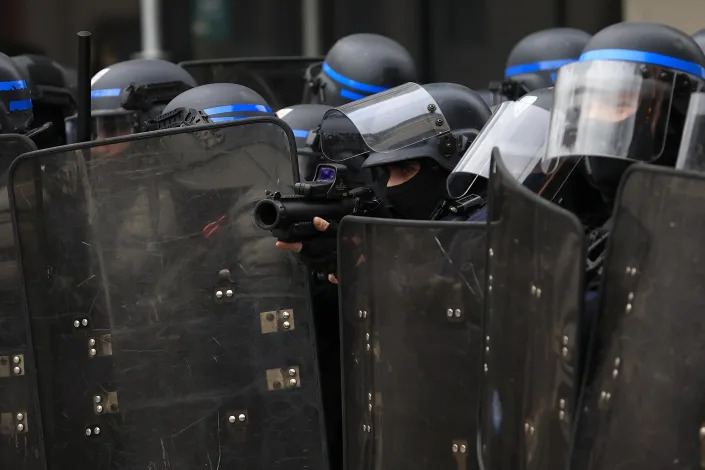






 AFP
AFP 

